Called the "Solar Panel Of The Animal World," meerkats use their dark-skinned, sparsely furred bellies to warm up. A group of meerkats, usually five to thirty members, is called a "mob" or a "gang." |
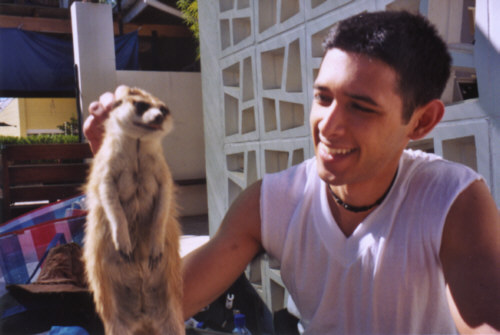
|
| The cheetah is the world's fastest land mammal, it can reach speeds of at least 105 km/hr. But becomes exhausted after a few hundred metres and therefore usually stalks prey to within 60 meters before unleashing its tremendous acceleration. |
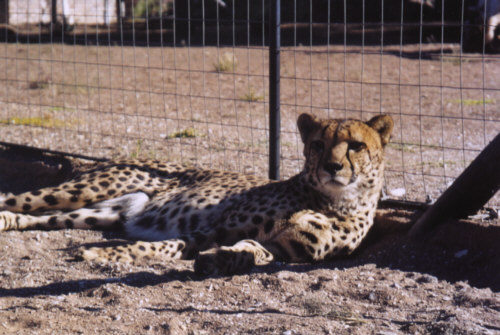
|
| The ostrich is the world's largest living bird. It is wildly distributed throughout the savanna plains, and particularly common in the desert plains of western Namibia. The adult ostrich stands around 2 meters high and weighs up to 150 kg. |
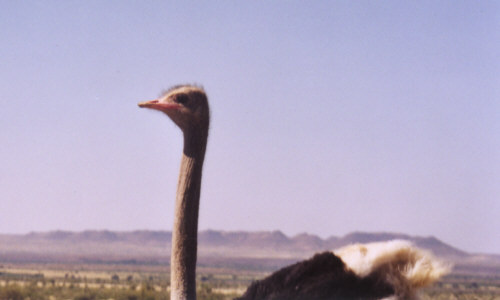
|
| Sometype of spiky (like most living things in the desert) lizard. |
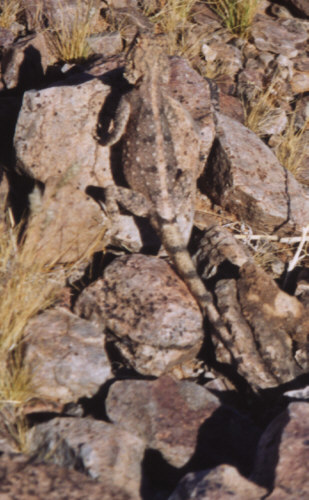
|
| On the desert plains of South-western Namibia live some the world's only wild desert-dwelling horses. The origin of these eccentric equines is unclear. These horses are protected inside the Diamond Area 1. The region where they live is so dry that the horses are relatively free of disease and parasites, and having been isolated so long, they're unlikely to have any immunity to disease, making them very valuable for scientfic purposes. |
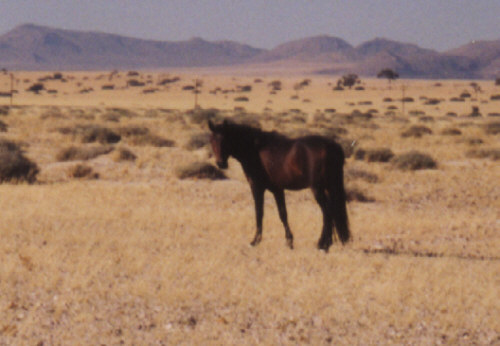
|
| Flamingoes flock in large numbers to pools along the Namib desert coast, particularly around Walvis Bay and Luderitz (picture). They're excellent fliers and have been known to migrate 500 km overnight, following proliferations of algae and crustaceans not just along this barren coastline but all over Southern and Eastern Africa. |
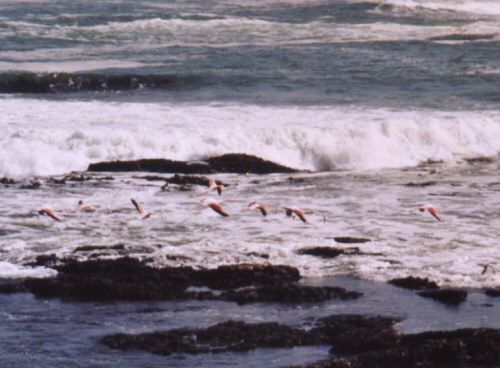
|
| Can you beleive this is a nest? (for what? an ostrich?) |
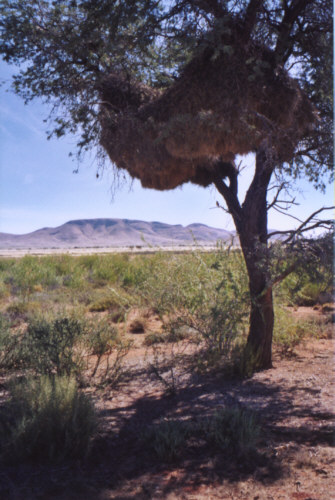
|
| Nice big bull. |
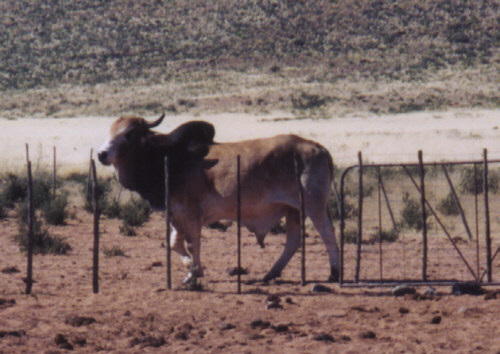
|
| Just regular little farm goats. |
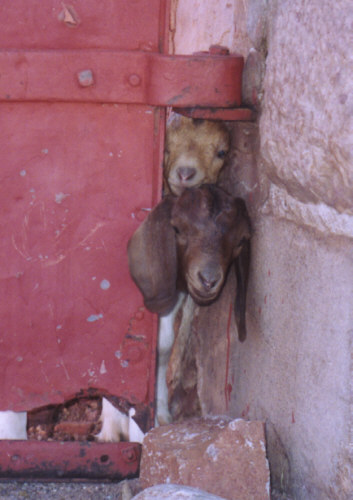
|
| We've encountered our fair share of snakes along the roads. |
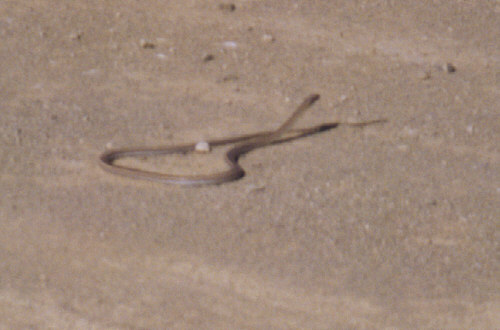
|
| Plenty of bugs to keep us busy when no "real" animals were around. |
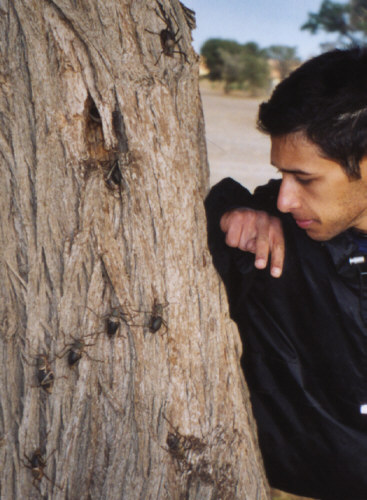
|
| Camel - made in Northern Africa. |
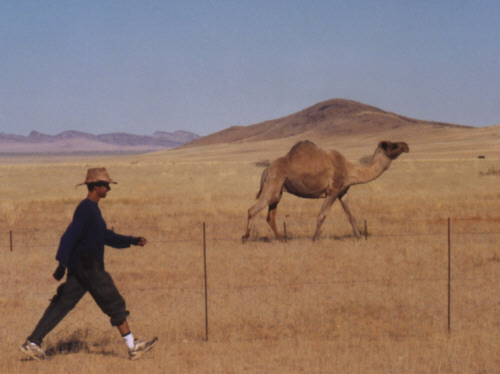
|
| Our good friend Schnitzel. |
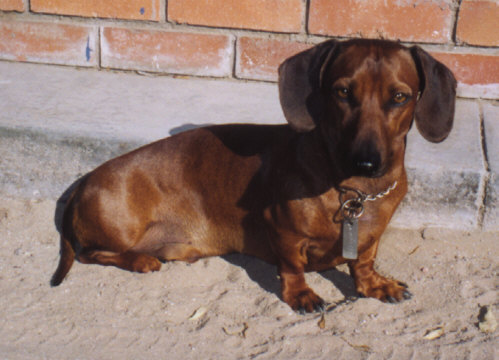
|
| Domesticated peacock. |
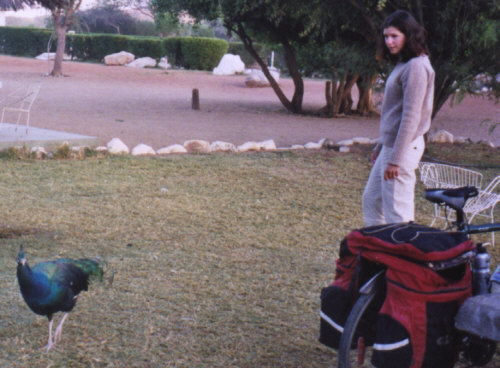
|
| Nests |
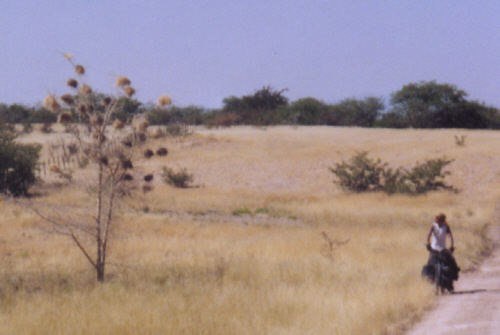
|
| Average-sized termite mound. |
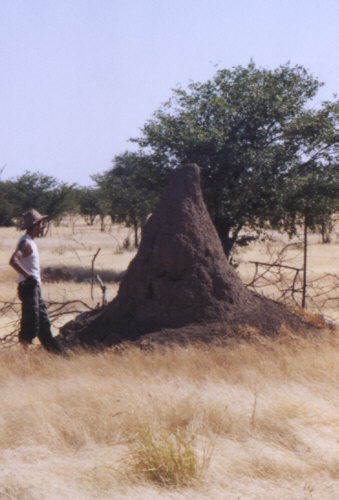
|
| The gemsbok can tolerate arid areas uninhabitable to most antelopes. It can survive without drinking (obtaining enough water from its food) and tolerates extreme heat. As a means of conserving water, gemsbok can let their body temperature climb to levels that would kill most mammals. |
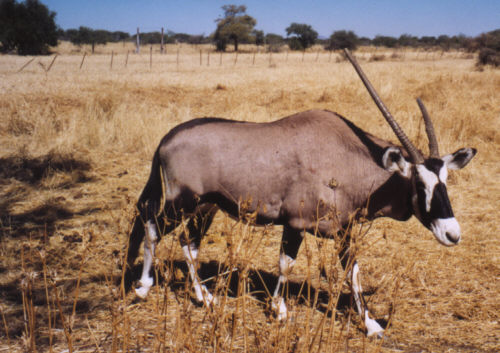
|
| The rock dassie is a large rodent that is found in rocky terrain with good outlook and many small niches to provide cover from predators. |
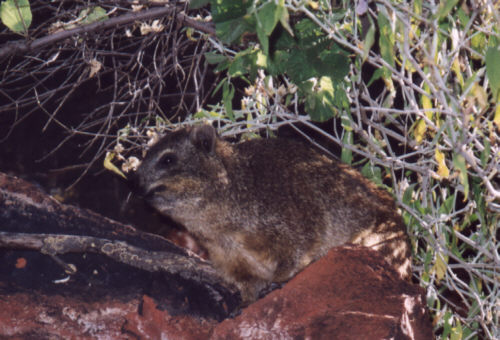
|
| The impala is a unique antilope with no close relatives. It is gregarious, forming herds of up to 100 or so. The impala is known for its speed and ability to leap - it can spring as far as 10 meters in one bound, or 3 meters in the air. |
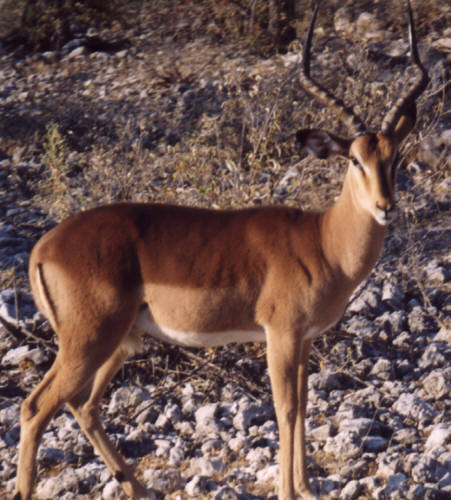
|
| The blue wildebeest is gregarious, forming herds of thousands in some parts of Africa, often in association with zebras and other herbivores. It is a grazer, and moves constantly in search of good pasture and water. |
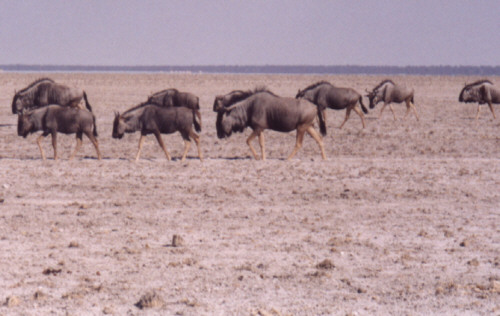
|
| The yellow-billed hornbill. |
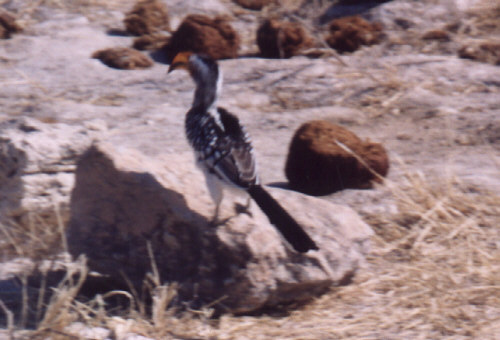
|
|
The name 'giraffe' is derived from the Arabic word zarafah (the one who walks quickly). The giraffe is the world's tallest mammal, exploiting a zone of foliage inaccessible to all other herbivores except for elephants. Zebras are grazers but occasionally browse on leaves and scrub. The social system centres on small groups of related mares over which stallions fight fiercely. |
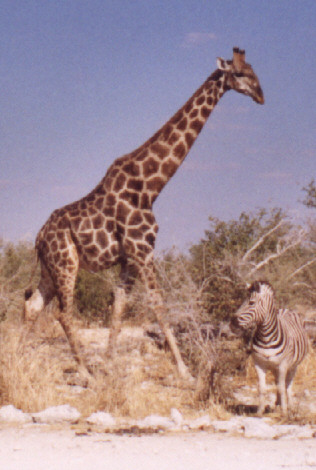
|
| Africa's smallest (and cutest, naturally) antelope: The tiny dik-dik. |
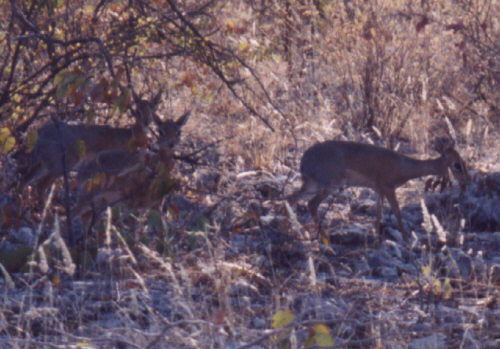
|